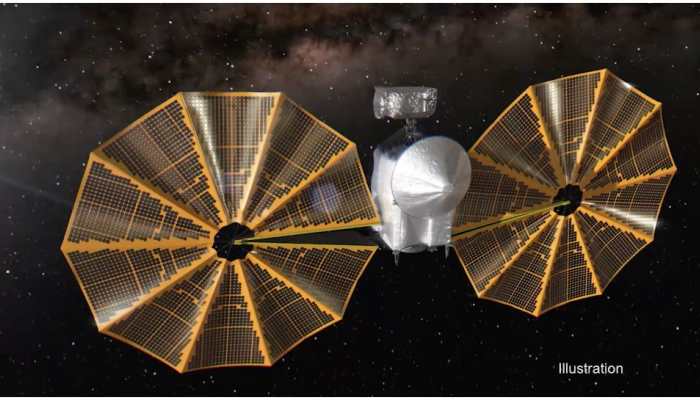Jupiter News
The planetary parade will be observable from many locations, including the United States, Mexico, Canada, and India.
Our solar system comprises of 8 planets of which 4 are rocky worlds, 2 are complex gas giants and 2 are distant ice giants.
Jupiter will be the closest to earth on September 26
Stargazers can expect a spectacular view when it reaches the opposition
Jupiter's opposition occurs every 13 months making it appear larger and brighter than at any other time of year
NASA’s Webb telescope captures Jupiter’s Great Red Spot and faint rings images
The Webb telescope is worth $10 billion
The telescope aims to solve mysteries in our solar system
The newly released images were actually stitched together from a number of images of Jupiter, taken from images in July.
The conjunction was brightest on Friday morning but will remain visible until Monday from most parts of the world, reported IANS.
After 1,000 years, a rare and unique astronomical event will take place during the last week of April
4 planets including Venus, Mars, Jupiter and Saturn will align in a straight line in the eastern sky for around one hour before the sunrise
Europa is the moon of Jupiter
Europa was discovered by Galileo Galilei in 1610
Europa is the smallest of the Galilean moons
Lucy will explore the Trojan asteroids with a suite of remote sensing instruments
Lucy will be the first spacecraft to study Jupiter`s Trojan Asteroids
NASA is set on Saturday to launch a first-of-its kind mission, dubbed Lucy, to study Jupiter`s Trojan asteroids, two large clusters of space rocks that scientists believe are remnants of primordial material that formed the solar system`s outer planets.
Evidence of the presence of the water vapor in the atmosphere around Jupiter's moon Ganymede has been found, a study of findings by Hubble telescope was published in the journal 'Nature Astronomy'.
NASA confirms detecting FM radio signals from Jupiter's moon Ganymede, a first for this particular moon.
The FM radio signals were picked up by a spacecraft called Juno which was orbiting Ganymede.
What does this mean, and does this confirm any kind of any alien life form?
Jupiter and Saturn will be at the closest possible distance to each other, in what is being called the greatest celestial marvel in centuries.
The great conjunction will be seen in the night sky between 6.30-7.30 PM.
The planets Jupiter and Saturn will be at the closest possible distance to each other on Monday.
Called as the 'great conjunction', it will be seen in the night sky between 6.30-7.30 PM.
Such an event was last observed nearly 400 hundred years ago, in 1623 and the next one is likely to take place in 2080.
Those unable to watch the event at the planetarium due to curbs on crowding, can see the conjunction of the two stars online at www.taralaya.org.
"As the sixth planet from the sun and second largest in the solar system, Saturn is a gas giant with an average radius of nine times that of earth," added the official.
The conjunction also coincides with the longest day (December 21) in the year.
Would you like to view a cosmic wonder that is taking place the first time in nearly 800 years?
The phenomenon will take place at the beginning of the winter solstice.
A rare celestial treat awaits people on the evening of December 21, the beginning of the winter solstice.
The year is coming to an end and the solar system has decided to close the chapter on a beautiful cosmic phenomenon.
Loading...



)
)
)
)
)
)
)
)
)
)
)
)
)
)
)
)
)
)
)
)
)
)
)
)
)
)
)
)
)
)
